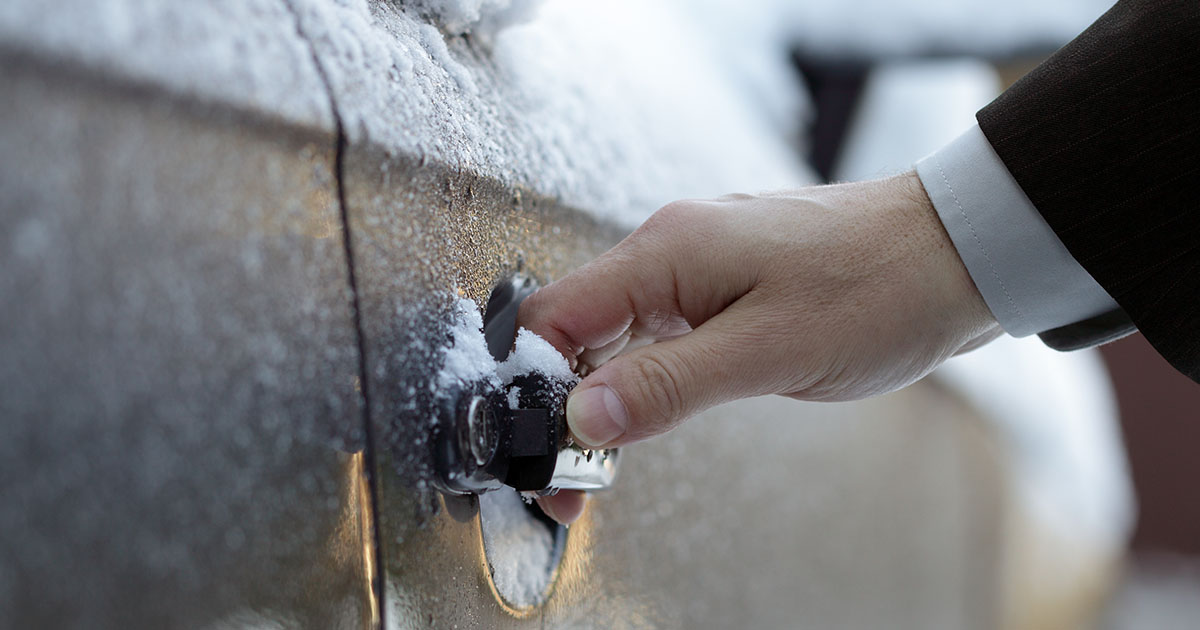5 Fast Facts to Stop Car Doors from Freezing

Frozen car doors and windows can be part of winter. Not the fun part, though, especially if you are in a hurry.
Why does this happen? It’s probably because the rubber seal that runs along the edge of your car doors and windows – is dirty, torn, loose, cracked, or missing. This allows moisture to seep in and freeze your car’s doors and windows shut.
5 ways to prevent frozen car doors or windows
- De-icer
Use windshield de-icer along the seams of the car door or window to break up the ice. If you don’t have any de-icer, you can use two-thirds rubbing alcohol and one-third water to get the job done.
If the ice is particularly stubborn, you might also want to use a hairdryer to help.
- Cooking spray
You can use cooking spray or a silicone lubricant. Put it on with a cloth of paper towel. Cooking spray or the silicone lubricant will help keep moisture out, preventing water accumulation and freezing.
- Clean Rubber Seal
When it’s dirty, torn, loose, cracked, or missing, it allows moisture to seep in and freeze.
Clean the sealing with warm, soapy water and then dry thoroughly with a towel. You don’t want the rubber sealing to freeze while you’re doing your cleaning.
- A towel
Put a towel in the door just above the window, between the car door and frame. This will give you another point to pull from if your car door is frozen shut. It will also prevent you from damaging or snapping off your door handle.
- Warm Water Method
Pour a warm bucket of water over the areas around the doorframe. This should melt most of the ice almost immediately. Then push on the door with your body weight a few times to break apart any remaining ice. The door should open easily at this point.
Don’t use really hot or boiling water because it could shatter the window or damage the paint.
Remember that extreme cold temperatures can cause ice and fog to form on the inside of car windows when the moisture in the car evaporates, condenses on the glass, and then freezes.



.jpg?300x300)